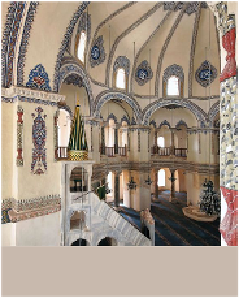Travel Reference
In-Depth Information
Architecture
Byzantine Architecture
The city spent 1123 years as a Christian metropolis and there are a surprising number
of structures surviving from this era.
When Mehmet the Conqueror descended on İstanbul in 1453 many churches were conver-
ted into mosques; despite the minarets, you can usually tell a churchcum-mosque by the
distinctive red bricks that are characteristic of all Byzantine churches.
During Justinian's reign (r 527-65), architects were encouraged to surpass each other's
achievements when it came to utilising the domed, Roman-influenced basilica form.
Aya
Early Byzantine basilica design used a centralised polygonal plan with supporting walls
and a dome set on top, inside rectangular external walls. The lovely
Little Aya Sofya
(
CLICK HERE
; Küçük Aya Sofya Camii), built around 530, is an example. Later, a mixed ba-
silica and centralised polygonal plan developed. This was the foundation for church design
from the 11th century until the Conquest and many Ottoman mosques were inspired by it.
IZZET KERIBAR ©
The Byzantines also had a yen for building fortifications. The greatest of these is the
still-standing land wall. Constructed in the 5th century by order of Emperor Theodosius II,
it was 20km long and protected the city during multiple sieges until it was finally breached
in 1453.


